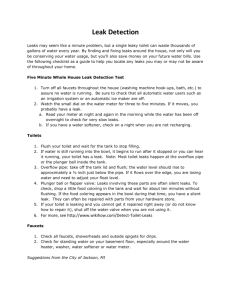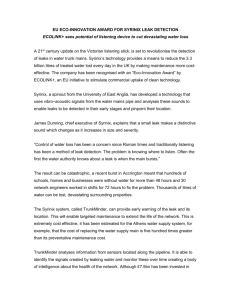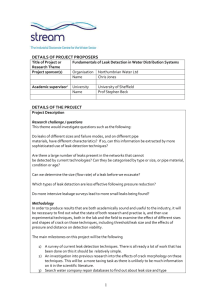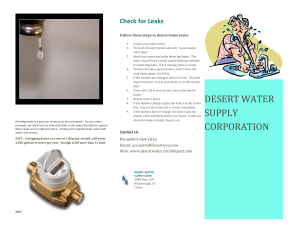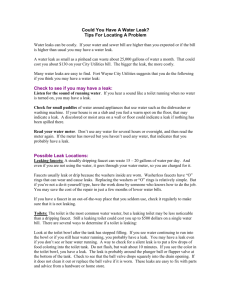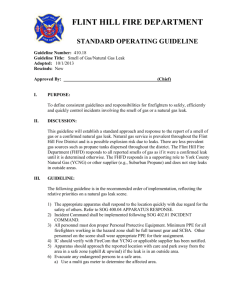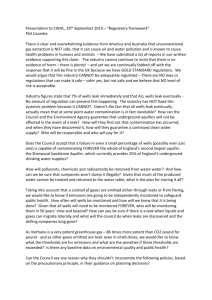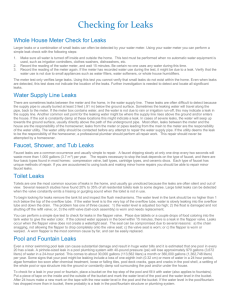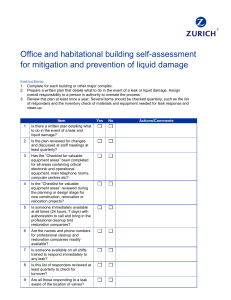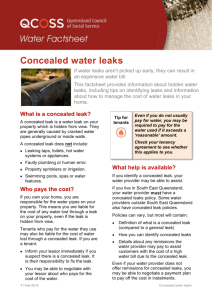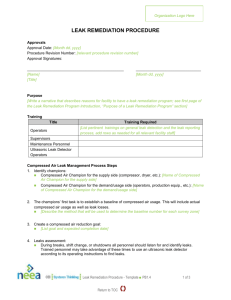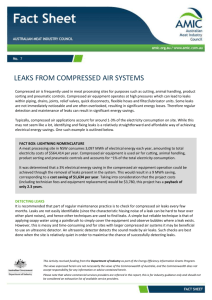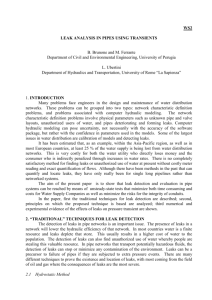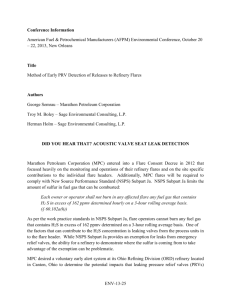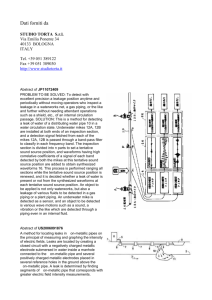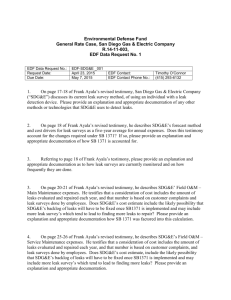here - Ahoskie
advertisement
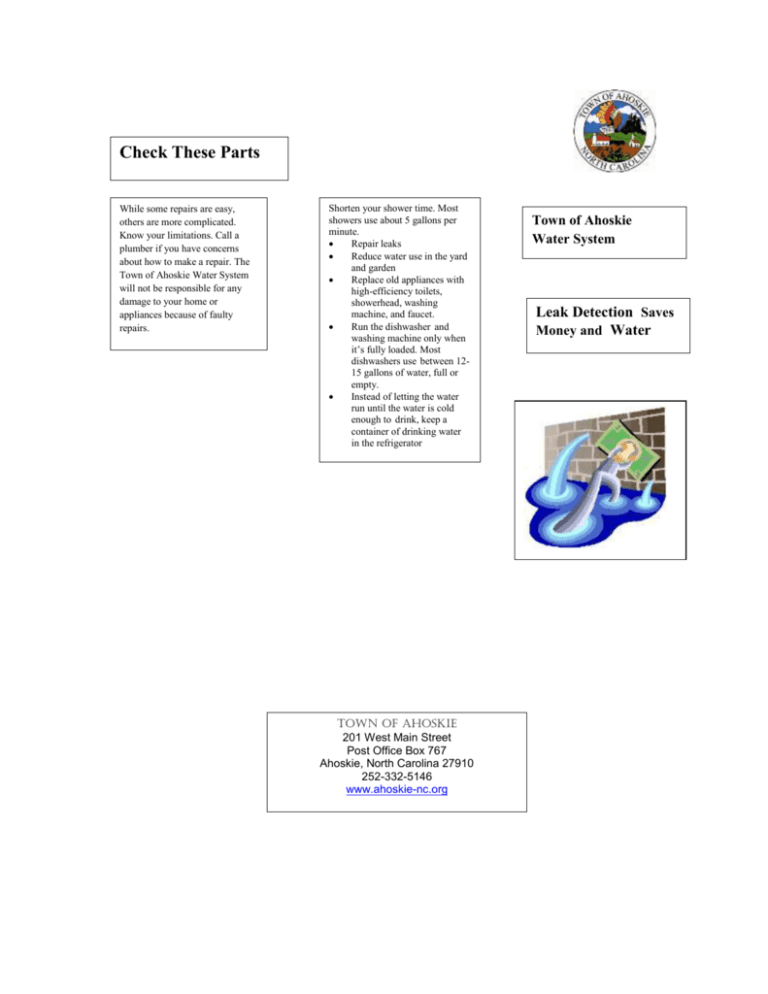
Check These Parts While some repairs are easy, others are more complicated. Know your limitations. Call a plumber if you have concerns about how to make a repair. The Town of Ahoskie Water System will not be responsible for any damage to your home or appliances because of faulty repairs. Shorten your shower time. Most showers use about 5 gallons per minute. Repair leaks Reduce water use in the yard and garden Replace old appliances with high-efficiency toilets, showerhead, washing machine, and faucet. Run the dishwasher and washing machine only when it’s fully loaded. Most dishwashers use between 1215 gallons of water, full or empty. Instead of letting the water run until the water is cold enough to drink, keep a container of drinking water in the refrigerator Town of Ahoskie 201 West Main Street Post Office Box 767 Ahoskie, North Carolina 27910 252-332-5146 www.ahoskie-nc.org Town of Ahoskie Water System Leak Detection Saves Money and Water Locate and Read Your Meter Locating a leak is a process of elimination. Shut off one toilet at a time at the wall. In between each shutoff, go to the water meter and check your flow indicator. If the small triangle stopped moving, that means the toilet is the culprit. If the small, red flow-indicator triangle is moving, that toilet is not the problem. Something else is causing the water flow. Once a year, test your toilet for leaks • Remove the tank’s cover carefully. • Drop leak dye tablets or 5-6 drops of food coloring into the tank. • Wait several minutes. • If the bowl has color, you have a leak. Check These Items for Leaks Toilet Leaks A quick check can be made by placing a few drops of food coloring into the tank. If there is a leak, then color should appear in the bowl within 15-30 minutes. Two common leak sites are at the overflow pipe and the flapper valve. To determine if the leak is at the over-flow pipe, look for water flowing over the top of the pipe. You can adjust the water level by gently bending the float arm down so that the valve shuts off when the water level is a half inch be-low the top of the overflow pipe. Check These Items for Leaks Faucets Check faucets regularly for leaks at the faucet head, and seepage at the base and its connections. If the leak is not at the overflow pipe, check the flapper valve. If it appears to be deteriorated or does not seal completely, it should be replaced. You can find a replacement flapper valve at your local hardware store. Appliances Check the hose connections to your washer and dishwasher to make sure they are firmly secured. Pipes Periodically check your plumbing fix-tures and exposed pipes. Listen for the sound of running water. Many leaks can be detected by sound as well as by sight. A leaking faucet is frequently the result of a bad rubber washer. The washer on a sink is typically located under the handle. Check local home centers or the Internet (keywords “repairing leaky faucets”) for instructions on how to repair faucet leaks. If you don’t feel comfort-able doing the repair yourself, a plumber may be your best option. Irrigation Systems If you notice that your misters are not spraying their normal amount of water, or if you notice water pooling or running off below your system, you may have a leak. The first thing to do if you suspect a leak is to clean the nozzles. If this does not solve the problem, you will need to inspect the rest of the system for leaks, especially the tubing, fittings, and nozzles. If you locate the leak, you will either have to mend or replace the leaking part.
